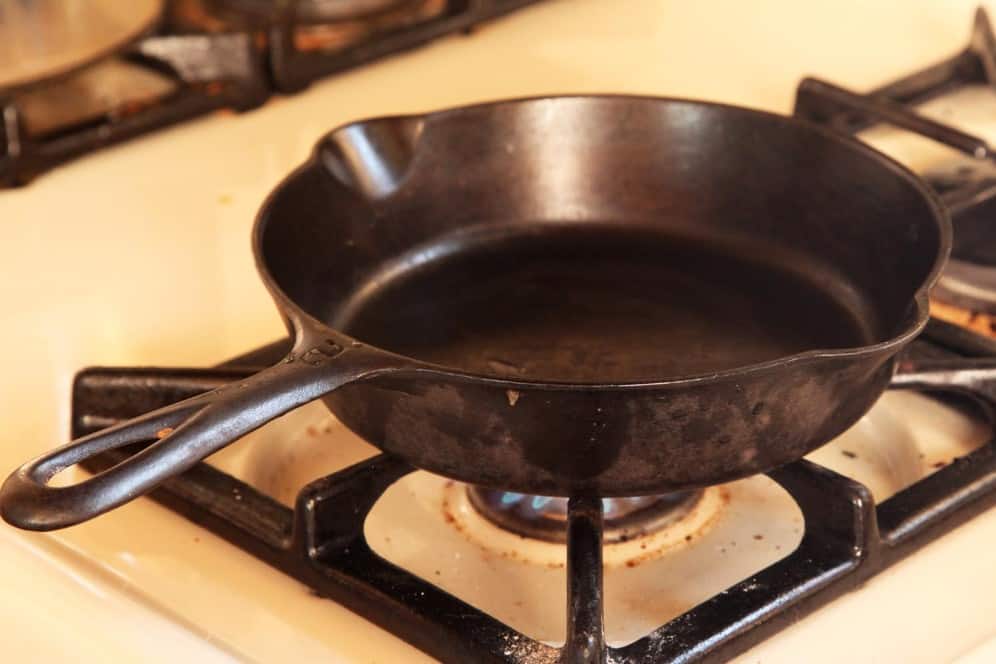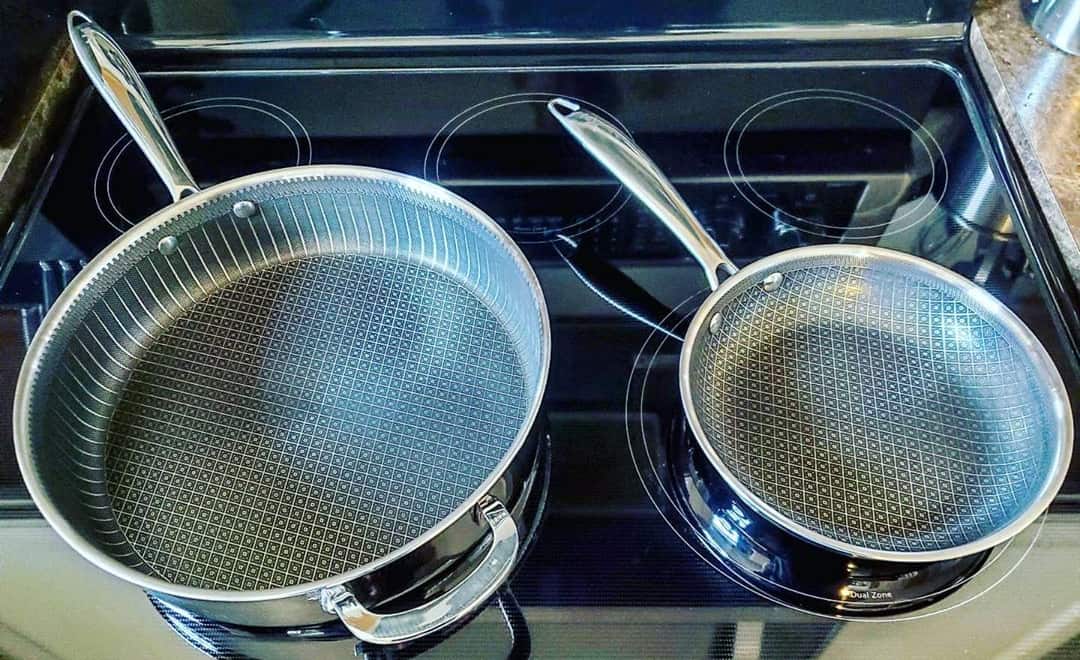In an age of rapid innovations, many aspects of the kitchen have remained largely unchanged over the last century. Most houses use either gas stoves or electric stoves. One of the novel heating methods is the induction hob. This article will tell you all about induction cooking and induction pans.
Can You Use Induction Pans on Gas Stoves?

Many people are starting to see the advantages of using induction cooktops. Professional and home chefs are now opting for induction cooking due to its many benefits. If you have both gas and induction cooktops, you might be wondering if you can use your induction pans interchangeably.
The answer is yes. Most induction pans are designed to withstand heat from both induction and gas stovetops. Of course, there are a few outliers.
Some manufacturers will specify that their pans are only for induction hobs in their packaging. This type of induction pan should be strictly used with an induction hob unless you want to cause damages.
There are reasons why an induction pan might not fit your gas stove. It might be that the base iron or steel is not sturdy enough to withstand gas heat.
Some induction pans also have a non-stick coating on their cooking surface. This coating may not be designed to withstand the direct flame of a gas stove.
The harmful gases from the open fire can melt the non-stick surface or deform the pans. One of the essential things that an induction pan should have is a flat surface so that it can heat up quickly.
Besides the pans mentioned above, you are free to use other types of induction pans on your gas stove.
Ordinary pans such as cast iron skillets and magnetic steel pans can be used in induction and gas cooktops. Using the same cookware will cost you less.
What is Induction Cooking?
Induction cooking is another method to heat your food. It uses the magnetism of the induction hob and the pan to transfer heat more rapidly than electric and gas stoves.
The way it works is that it transfers heat by using the currents in the electromagnetic field. The heat is generated by the electromagnetic interaction between the induction hob and the pan. Since no space separates the pan from the heat, induction cooking is the fastest cooktop to transfer heat.

Here are some more benefits of induction cooking:
Faster Cooking Process
Since heat transfer in the induction hob is made directly into the cookware, it takes much less time to heat up. You can have a much quicker cooking time.
Better Temperature Control
You can have a better and more precise cooking temperature with induction cooktops than the other alternatives. It can help you control how to cook your food as you like it without being afraid of overcooking or undercooking your food.
Less Burns and Risks
Using an induction top is considered a much safer option for many. Since you need a specialized magnetic pan to transfer heat, you can minimize burns and accidents compared to gas and electric tops.
You can watch this in-depth video to know more about induction cooking and its quirks.
What is an Induction Pan?
The induction pan is a type of cookware designed to be used in an induction cooktop. The pan is mostly the same as other pans other than the magnetic base.
With that said, you can’t just use any pans for induction cooking. Most induction pans are made with magnetic materials such as iron and some types of stainless steel. The magnetic properties of the pans are essential since the transfer of heat relies on magnetic force.
Although induction pans exist, other standard household pans, such as the cast-iron skillet, are an excellent candidate to use in an induction hob. But, can you have it the other way around?
3 Types of Induction Pans for Induction and Gas Cooktops
Want to know if your pan is suitable for both induction and gas stovetops? Well, we got you! You might even have these pans in your kitchen already.
Cast Iron Skillet

Cast iron is the most durable and easy-to-use induction pan type since pure cast irons don’t have any coating. It can withstand many things such as high heat and metal utensils.
Cast iron skillets have a non-stick surface if you regularly reseason it. You can basically have a non-stick pan that can last you a lifetime since the skillet is made with casted iron. It’s magnetic and very durable.
The heat distribution is even and incredible with cast irons. If you use it with an induction hob, you can have excellent sears.
You also don’t have to worry about any bending or scratching. Cast iron skillets are very hard to damage even with high heat. It can even withstand the heat and baking inside of the oven.
The only thing you must look out for when using the cast iron skillet is leaving it moist and cooking in acidic foods. Other than that, the cast iron skillet is the best candidate to use in both induction hob and gas stove.
Magnetic Stainless Steel Pan

Stainless steel is a mix of many metal alloys. Along with cast iron, stainless steel pans are the most used pans worldwide.
While stainless steel, being an alloy, generally resists rust better than cast iron, it’s essential to care for it to prevent any corrosion. The only problem is that it doesn’t have any non-stick capabilities, so you have to use it with a lot of oil or butter to avoid sticking.
The stainless steel is very tough. You can use it both with induction and gas stovetops. You can leave it in water for a long time without any damage.
While many stainless steel pans are magnetic, some, depending on their composition, are not. Make sure to read below about how you can identify which of your pans are suitable for induction hobs.
Stainless Steel Clad Pans

If you don’t want a purely stainless steel pan, you can combine it with something else, such as copper or aluminum. By coating the surface and bottom of the pan with stainless steel, you can have the pros of both metals.
For example, copper pans clad with stainless steel are among the best thermal conductors compared to other pans. Pure copper pans are hard to maintain and prone to irreversible damages and health problems. By combining these two metals, you can eliminate some of these risks.
This stainless steel pan will heat the whole pan quickly and lose it fast, perfect for delicate sauces and glaze. The protective layer of the non-reactive steel will protect you from ingesting copper that may result in copper poisoning.
These pros also apply to aluminum pans clad with stainless steel. Aluminum is reactive and can cause harm when ingested, but with the protection of stainless steel, you can have the outstanding thermal conductivity of aluminum without health risks.
Now we know the type of pans you can use with induction and gas cooktops, let’s get into the way you can identify what qualities to look for when buying induction cookware.
3 Thing to Keep in Mind When Buying an Induction Pan

There are many features that you must look at the pan other than the primary materials it’s made out from. If you are still new to induction cooking, here are some tips you may want to keep in mind.
Magnetism
We can’t stress this enough; the pan’s magnetism is the most crucial factor when it comes to induction cooking. If your pan doesn’t have any form of magnetism, the heat will not transfer from the induction hob, so always keep it in mind.
You can quickly check the magnetism of the pan by using any type of magnet and sticking it in the bottom of your pan. If the magnet sticks, then it means that your pan is induction ready.
Flat Cooking Surface
Yes, now your pan is magnetic, but does it have a flat surface?
The flat surface is significant since induction pots transfer the heat with direct contact. If your pan is magnetic but doesn’t have a flat bottom surface, you will have difficulty using the induction hob. You can check if your pan can conduct heat from the induction hobby doing the water test.
Just pour out a cup or two of water and let it boil. If the water boils in less than 10 minutes, it means that your pan is induction-ready.
Sturdy Material
You can reach high temperatures very fast with an induction hob. If your pan is thin, it can cause dents, hotspots and can even deform the pan.
Always have thick and durable pots and pans when cooking with induction hobs.
In Conclusion
With the rise of induction pans, many people are more willing to try them since it’s relatively new, proper guidance and information are a lot scarce compared to other alternatives.
We hope this article has taught you all about induction pans. If you have more questions and inquiries, be sure to comment below.


Michael Johnson is the founder of Pan Mastery, Inspired by his blacksmith grandfather’s legacy has a deep appreciation for hand-crafted pots and pans, he provides invaluable guides, reviews, and recipes to enhance your culinary journey.
